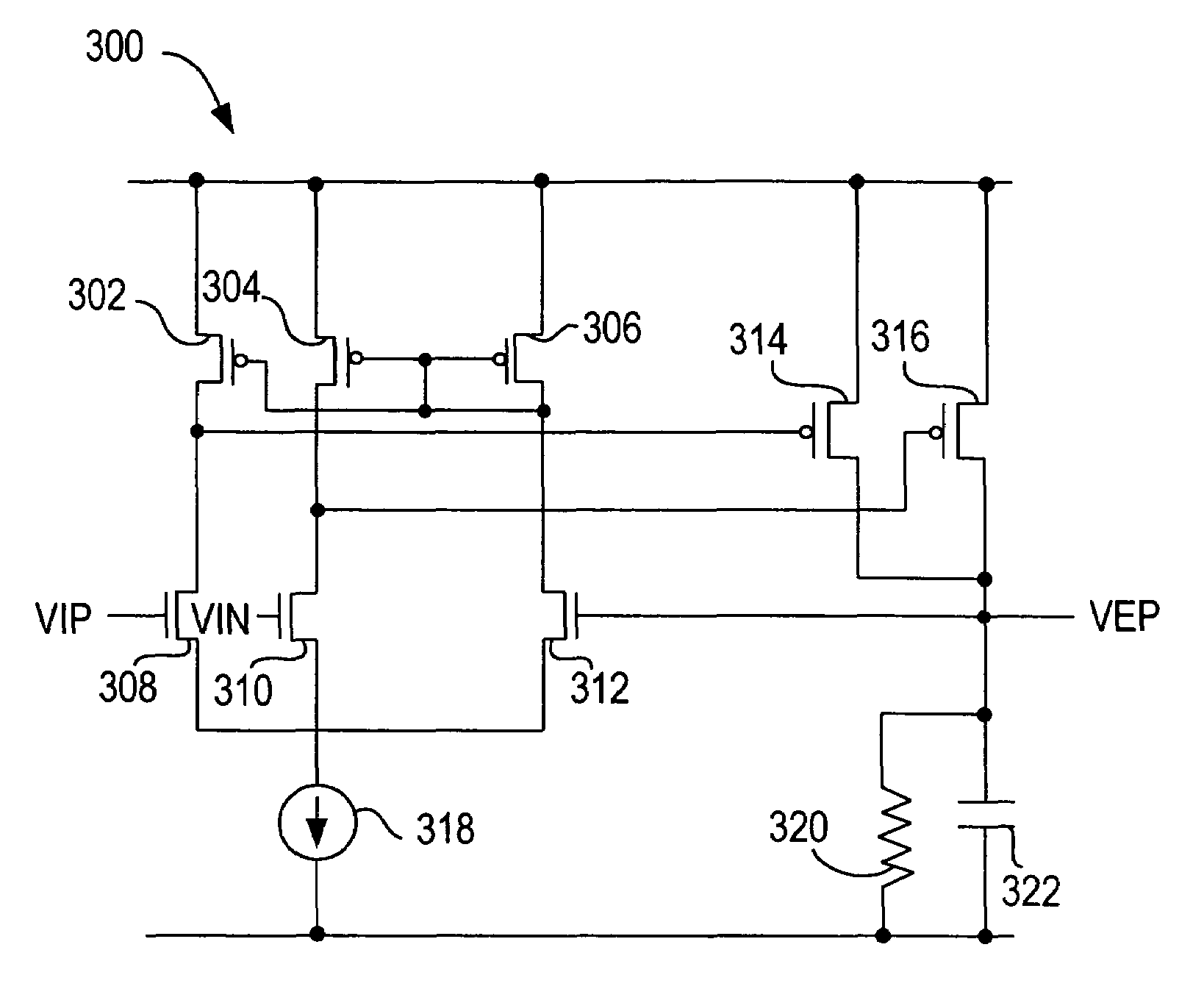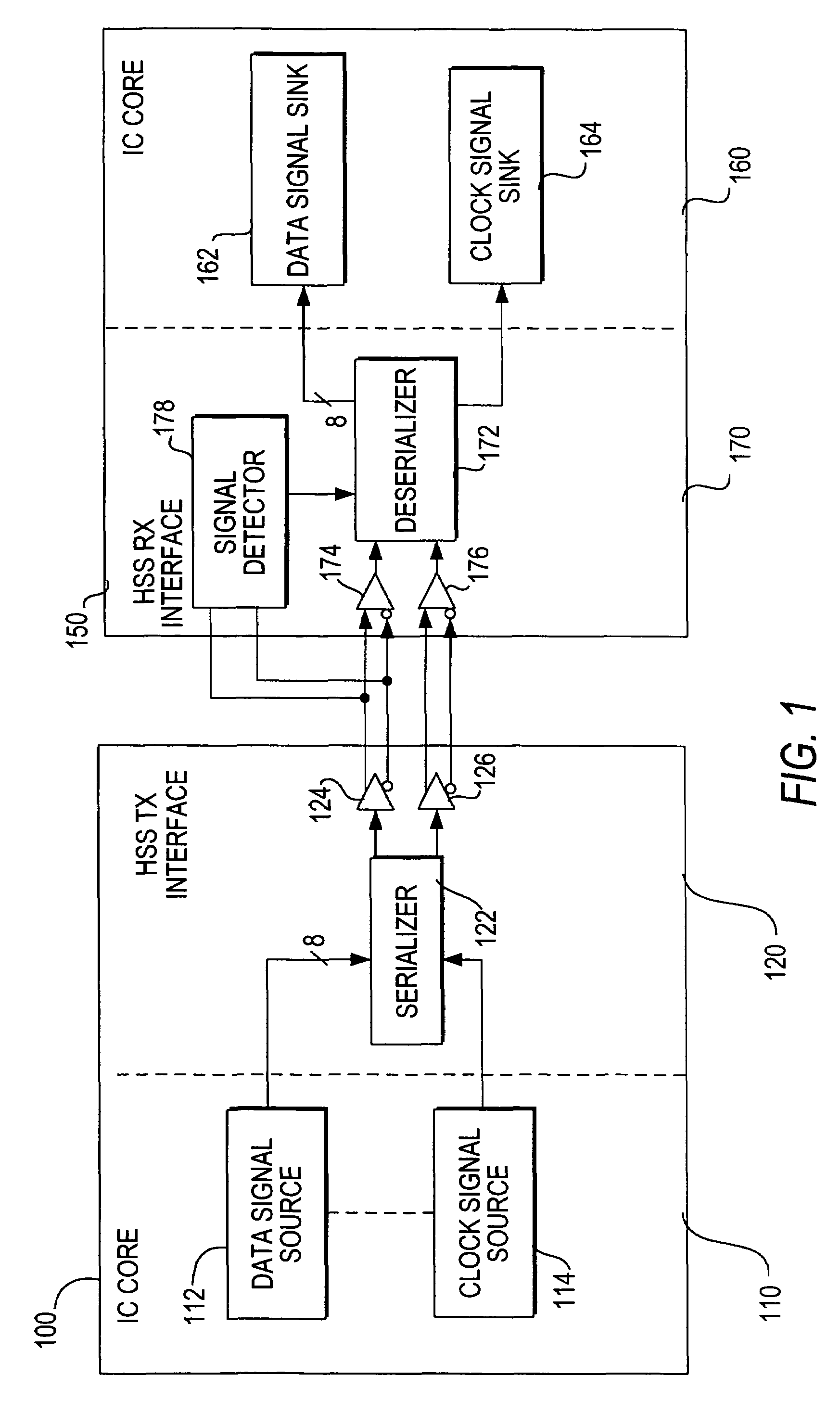Differential signal detector methods and apparatus
a detector and signal technology, applied in the field of differential signal detector methods and apparatuses, can solve the problems of wasting valuable interface pins at the edge of the chip, not addressing the situation of data unintentionally corrupted, and the solution will not work i
- Summary
- Abstract
- Description
- Claims
- Application Information
AI Technical Summary
Benefits of technology
Problems solved by technology
Method used
Image
Examples
Embodiment Construction
[0020]Two integrated circuit (“IC”) chips 100 and 150 that communicate via a high speed serial interface are shown in FIG. 1. Because all elements of transmitting IC 100 have analogous elements in IC 150 that perform the reverse function, corresponding elements are referred to by numbers that differ by 50. Although the interface is shown as occurring between two different ICs, it could also be used for communication within a single IC. Furthermore, the ICs can be of various types, such as programmable logic devices, application-specific integrated circuits, or hybrids of the two.
[0021]IC 100 comprises an IC core 110 and a HSS transmission interface 120. IC core 110 contains data signal source 112 and clock signal source 114. Element 112 generates 8-bit bytes to be ultimately transmitted to IC 150. Element 114 generates a clock signal that is associated with the data signal from element 112. The dotted line connecting data signal source 112 and clock signal source 114 indicates a pre...
PUM
 Login to View More
Login to View More Abstract
Description
Claims
Application Information
 Login to View More
Login to View More - R&D
- Intellectual Property
- Life Sciences
- Materials
- Tech Scout
- Unparalleled Data Quality
- Higher Quality Content
- 60% Fewer Hallucinations
Browse by: Latest US Patents, China's latest patents, Technical Efficacy Thesaurus, Application Domain, Technology Topic, Popular Technical Reports.
© 2025 PatSnap. All rights reserved.Legal|Privacy policy|Modern Slavery Act Transparency Statement|Sitemap|About US| Contact US: help@patsnap.com



